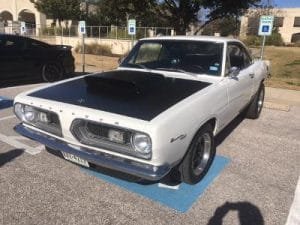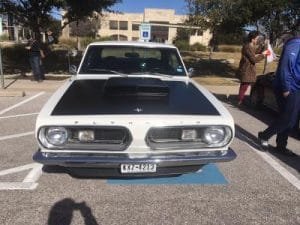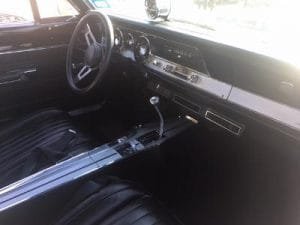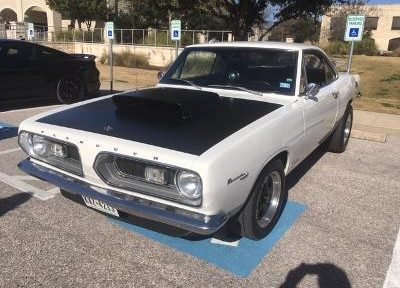Featured here is a 1967 Plymouth Barracuda. The Barracuda was a very popular two-door pony car. The Plymouth Barracuda was built by the Plymouth Division of the Chrysler Corporation from 1964 to 1974.

Start of the Muscle Car Wars
The decade of the 1960s and particularly the latter 1960s was known as the era for muscle cars. When we speak of power during the muscle car era we are looking at times for the zero-to-60-mph acceleration greatly less than those of the 1950’s. The 1960s saw American automakers putting maximum effort on performance.
With the Ford Mustang Pony Car coming out in 1964, Plymouth decided to upgrade their Barracuda model with much more power. The 1965 Barracuda offered buyers a choice 225-cubic inch Slant Six, or 273 cubic inch two-barrel V-8 with 180 HP. Most would say that the Plymouth Barracuda was created to compete directly with the Mustang.
When we look back at the 1867 Plymouth Barracuda models we see that this was the time the Barracuda was really starting to heat up the Detroit muscle car wars. In 1967 the name of the game was power and more power. The 67 Barracuda was the finest example of a Mopar muscle car and we think it still is today.

1967 Plymouth Barracuda Styling
Many people remember the Plymouth Barracuda as that car with the large rear glass window. All of that changed with the 1967 Barracuda model. The 1967 models had an all new design. Sheet metal was changed on the car all around. These second generation Barracudas finally made a break from similarities with the old Plymouth Valiant model.
The 1967 body lines were very aggressive with the wide front end, kick-up rear fenders, and a fastback profile for some models. The second generation Barracuda was the first year for the convertible and the Formula S.
For 1967 Plymouth offered their Barracuda as a hardtop, a fastback, and as a convertible.
The Plymouth Barracuda Formula S
The Plymouth Barracuda was given a great performance boost in 1965 with a new Formula S option package. One big accomplishment this Formula S package was to give the Barracuda was better cornering and acceleration/cornering balance. Along with this high performance package came stiffer springs, a four barrel Carter carburetor, faster steering, heavy duty shocks, wider tires and the 383 V-8.
1967 Plymouth Barracuda Specifications
As mentioned above, the 1967 Plymouth Barracudas offered two 273 cubic inch V8s and an all new 383 cubic inch V8. The Slant Six engine was no longer an option.
Transmissions included a three and four speed manual and a TorqueFlite three speed automatic.
 Brakes were four wheel hydraulic drums with a power bake option.
Brakes were four wheel hydraulic drums with a power bake option.
Wheel base was 108.0 inches, overall outside length 192.8 inches, width 71.6 inches, height 53.5 inches. Curb weight averaged about 3,080 lbs.
New car prices for the hardtops were about $2,450 with the convertible models priced at about $2,750.
1967 Plymouth Barracuda production totaled 62,535 vehicles. Out of that number there were 30,110 Fastbacks, 28,197 Coupes and 4,228 Convertibles.
Related Auto Museum Online articles are found on the links below..
Reference material for this article includes..Dodge Challenger & Plymouth Barracuda by David Newhardt..Muscle Cars: The First American Supercars by Colin Romanick..
1967 Plymouth Barracuda Collector Car
 Today, the era of the muscle car wars is remembered fondly and the cars still bring thousands of people to televised classic car auctions. Both Dodge and Plymouth, Divisions of Chrysler Corporation, have been responsible for some of history’s most iconic Mopar muscle cars.
Today, the era of the muscle car wars is remembered fondly and the cars still bring thousands of people to televised classic car auctions. Both Dodge and Plymouth, Divisions of Chrysler Corporation, have been responsible for some of history’s most iconic Mopar muscle cars.
Current asking and auction prices for the 1967 Barracuda fall in a range from about $28,000 to $40,000 with exceptions both high and low. Originality, mileage, condition and age and degree of restoration will effect prices.
(Article and photos copyright Auto Museum Online)
